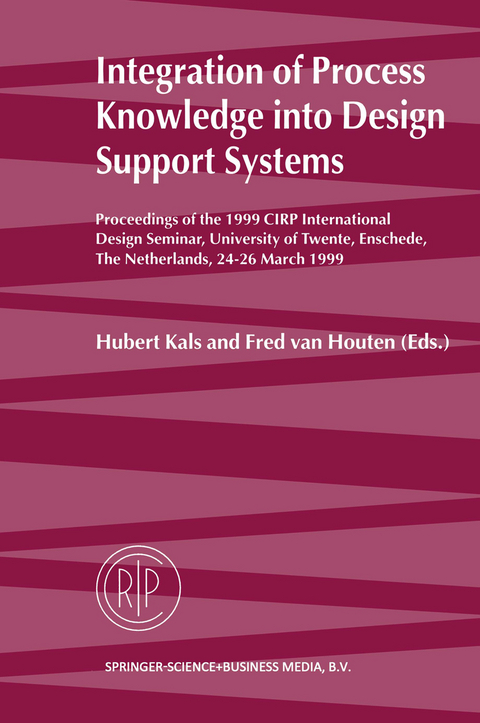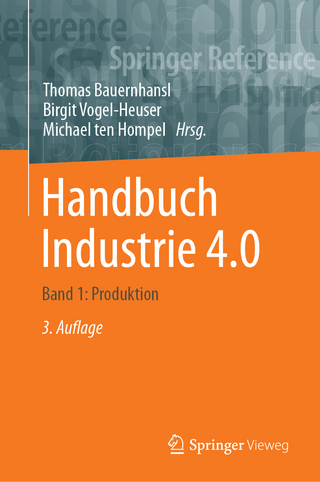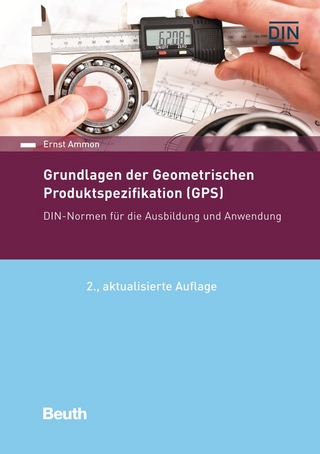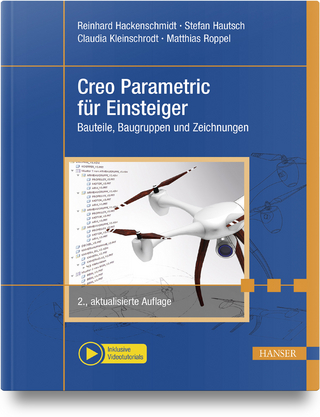
Integration of Process Knowledge into Design Support Systems
Springer (Verlag)
978-90-481-5199-8 (ISBN)
Design is a fundamental creative human activity. This certainly applies to the design of artefacts, the realisation of which has to meet many constraints and ever raising criteria. The world in which we live today, is enormously influenced by the human race. Over the last century, these artefacts have dramatically changed the living conditions of humans. The present wealth in very large parts of the world, depends on it. All the ideas for better and new artefacts brought forward by humans have gone through the minds of designers, who have turned them into feasible concepts and subsequently transformed them into realistic product models. The designers have been, still are, and will remain the leading 'change agents' in the physical world. Manufacturability of artefacts has always played a significant role in design. In pre industrial manufacturing, the blacksmith held the many design and realisation aspects of a product in one hand. The synthesis of the design and manufacturing aspects took, almost implicitly, place in the head of the man. All the knowledge and the skills were stored in one person. Education and training took place along the line of many years of apprenticeship. When the production volumes increased, -'assembling to measure' was no longer tolerated and production efficiency became essential - design, process planning, production planning and fabrication became separated concerns. The designers created their own world, separated from the production world. They argued that restrictions in the freedom of designing would badly influence their creativity in design.
Applications of Axiomatic Design.- Towards a Universal Design Theory.- Artificial intelligence support in design: A Survey.- Requirements for highly interactive system interfaces to support conceptual design.- Methodology for innovative design.- A COnceptual Design ASsistant (CODAS).- Integration of product design and production system design.- On the Determination of the Maximum Turnable State of a Part.- Optimal Degree of Parallelism and Integration in Design and Process Planning.- Towards the inclusion of process related knowledge into very high level modeling entities.- Using advanced petri-net for representation of decisions in the design process.- Structuring Principles for the Designer — Balancing Product Performance with Process Efficiency.- Collaborative design support using a meta-model approach and multi aspect modeling.- Product Data Management (PDM) for collaborative Manufacturing System Design.- Co-operation in design: indicators as supports for the discussion between product and process engineers..- Product architecture development enabling integrated re-design of mechanical products.- Optimum Design of Inherently Compensated Aerostatic Thrust Bearings.- Mixed continuous and discrete catalog-based design modeling and optimization.- Knowledge processing for timely decision making in Design For X.- Knowledge engineering for concurrent engineering.- The mechanism of creative reasoning and emergent constructions in conceptual design.- Synthesis Thought Processes in Design.- Towards a Unified Specification Language for Design Knowledge.- A requirement analysis for DFM design support in a DFX context.- On the Motivation of Feature Selection in Feature-based Modeling Systems.- A System Framework for Integrated Design and Manufacturing based on Standards.-Estimation of Tack-welding and Welding Cost during Design of Heavy Earthmoving Equipment.- Global Optimization of Mechanical Designs Based Upon Integrated Computer Models and Virtual Prototypes.- Designing for RTM using Manufacturing Cost Estimation Models.- Applicability of Fuzzy Constraint Networks to Manage Uncertain and Imprecise Information in Simultaneous Engineering.- Just in time knowledge — Product models for Strategic Product Planning.- Control of engineering processes through integration of design activities and product knowledge.- Control of design and manufacturing processes based on information content.- Design decisions derived from product requirements.- On-line monitoring of the emergent behaviour and characteristics of a product to improve product design.- Improving the Accuracy of Rapid Tooling for Design Evaluation.- Tool- and Process Control Issues relating to the use of a Flexible Cutting Tool.- Enhancement of Interaction for Modelling in Conceptual Design.- A Fractal Representation for Systems.- Ergonomics considerations for the conceptualization of the shape of body supports.- Classification of module drivers to support product modularisation by relational reasoning.- KoMoD: A constraint-based design support system for mechanical engineering.- Author index.- Keyword index.
| Erscheint lt. Verlag | 7.12.2010 |
|---|---|
| Zusatzinfo | XII, 474 p. |
| Verlagsort | Dordrecht |
| Sprache | englisch |
| Maße | 155 x 235 mm |
| Themenwelt | Informatik ► Weitere Themen ► CAD-Programme |
| Technik ► Maschinenbau | |
| ISBN-10 | 90-481-5199-6 / 9048151996 |
| ISBN-13 | 978-90-481-5199-8 / 9789048151998 |
| Zustand | Neuware |
| Informationen gemäß Produktsicherheitsverordnung (GPSR) | |
| Haben Sie eine Frage zum Produkt? |
aus dem Bereich


